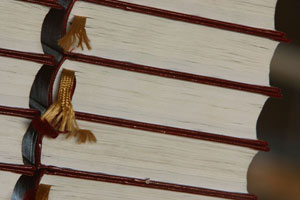
Although results of the May election might improve the
situation, the Hollister School District anticipates 24 layoffs in
2009-10 to help make up a $3.9 million shortfall due to state
budget woes. Prospectively changing that number, and its potential
effect on classroom sizes, is a proposition on the May
special-election ballot that would ensure state payback of funding
shortfalls to local schools down the road.
HOLLISTER
Although results of the May election might improve the situation, the Hollister School District anticipates 24 layoffs in 2009-10 to help make up a $3.9 million shortfall due to state budget woes.
Prospectively changing that number, and its potential effect on classroom sizes, is a proposition on the May special-election ballot that would ensure state payback of funding shortfalls to local schools down the road while allowing the Hollister district to forecast finances using less-drastic cuts, said HSD Superintendent Ron Crates, who noted how school officials started preparing for this “big problem” a year and a half ago.
Another potential injection could come from federal stimulus funds, but Crates said he is “leary” of the possibility.
District officials, therefore, for now are planning to follow through on the layoffs, while the affected employees already have been informed.
“I’m not going to put the district in a financial hole,” Crates said. “I’m just not going to – period.”
Crates called it “troublesome” that there were 14 “permanent” teachers – he likened it to being tenured – given pink slips for next school year.
Crates is holding out hope in particular, however, that voters will approve Proposition 1A on the May ballot. It calls for maintaining several of this year’s tax hikes for as long as four years while raising billions in additional revenue. Its approval would give him “some confidence” of future funding to fill the shortfall.
There inevitably will be an effect on classroom sizes, while Crates noted how the district will have some added flexibility with the state pulling back on prior restrictions and allowing a cap of 23 students in kindergarten or first grade and 25 students in second and third grades – increasing those figures from 20.









